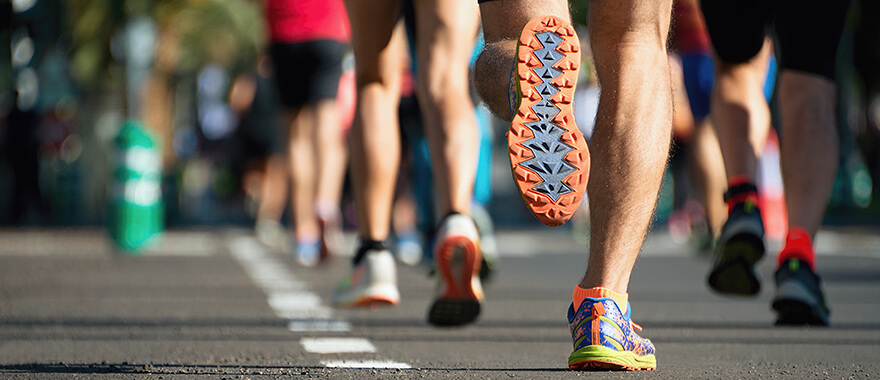A beginner’s guide to running

Posted: June 28, 2023
Did you know adults need at least 150 minutes of exercise a week? Many people run to stay active, but it can be intimidating for beginners who don’t know how to get started.
Jill Olson, MD, was once a self-proclaimed “non-athlete.” Now, she’s a marathon runner and wants to share her experience to empower other beginners on their running journeys.
Set goals and find support
Dr. Olson started running with the goal of completing the Bemidji Blue Ox Marathon. During this process, Dr. Olson found invaluable support and guidance from her trainers, running buddies and local running groups that motivated her to reach her goal.
Start a training schedule and learn proper techniques
To prepare for the marathon, Dr. Olson went to the weight room twice a week for 60 minutes of strength training and ran three to four days a week. She worked with Sanford Sports trainers to not only build strength, endurance and flexibility but also stay injury-free.
“I had kind of run before, and I noticed I was topping out at a certain speed and a certain distance,” Dr. Olson told Sanford Health News. “Despite everything I was trying, I was not able to break a certain barrier.”
Her trainers conducted a running evaluation to uncover any issues in her form that could slow her down or lead to injury. With this knowledge, Dr. Olson became more confident in her running ability.
Overcome challenges and stay motivated
- Celebrate your progress: Allow your weekly progress to be celebrated. With the guidance of her trainers, every milestone became a testament to Dr. Olson’s dedication.
- Overcome mental barriers: Develop a positive mindset and keep your support system close. Use each small gain to fuel your mental power.
- Find joy in the process: This is key to long-term motivation. Focus on the small achievements, embrace the feeling of progress and discover the pleasure of being active.
Dr. Olson’s 5 tips for beginner runners
- Just run: Starting to run can be intimidating, but with the right approach, you can overcome the initial hurdles and build a solid foundation for success. Set realistic goals, gradually increase your intensity and distance, and find a supportive community.
- Find the right running gear: Having the right gear provides comfort, support and protection during workouts. The proper running shoes, moisture-wicking clothing and other essentials will make your experience more enjoyable.
- Proper nutrition and hydration: It’s essential to fuel your body to optimize performance. Maintaining a well-balanced diet and staying hydrated will support your energy levels, promote recovery and enhance your overall running experience.
- Warm up: Pre-run warm-ups and dynamic stretches can provide significant benefits and reduce the risk of injuries. They help increase blood flow, improve flexibility and activate the muscles, preparing your body for the demands of running.
- Recovery and self-care: Implement a post-run recovery process such as stretching, foam rolling and refueling your body. Give yourself rest days and listen to your body as you work towards long-term progress.
Dr. Olson’s transformation from “non-athlete” to marathon runner proves that all people have potential, no matter their skill level. Beginners and experienced runners can learn from her story. So, lace up your running shoes and be inspired to start a running adventure of your own.




